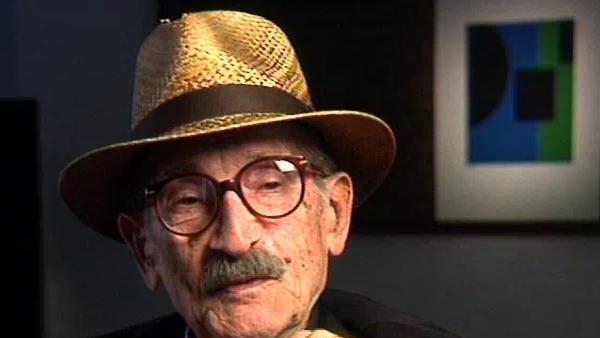NEXT STORY

Tamara Toumanova
RELATED STORIES

NEXT STORY

Tamara Toumanova
RELATED STORIES


|
Views | Duration | |
|---|---|---|---|
| 91. Dance and film | 21 | 01:26 | |
| 92. Fascinated by movement | 17 | 02:34 | |
| 93. Tamara Toumanova | 18 | 02:41 | |
| 94. Using geometric shapes in my work | 40 | 01:17 | |
| 95. Who is responsible for a great animation? | 1 | 117 | 02:44 |

I remember Martha Graham. At one time, I remember, when they were performing downtown at the square in Los Angeles, she was actually bent, you know? Let's say this is the... but she was that much bent. And you said to, you said to yourself: why the hell does she stays off the stage and work with the dancers and run the shop, you know and everything? But she had to be on the stage and believe me, she was bent. And you saw that and you felt sorry for her, it was ugly. But it was what she wanted to do, you know? She wanted to get on the stage and it was quite late. Eventually she give up. But even that time she was bent and it was obvious. I mean, you can't hide that! You're on a stage and you're bent! But Martha Graham is important, very important.
But there were a lot of others, you know? There was a group from Switzerland and I can't recall their name but they were something special. Anything that moves, I would go and look at. So that's, that's what I'm trying to say. And that was a beautiful group. Oh, The Green Table, that was the name of a ballet that came from the Swedish group. That was beautiful, Green Table. And then other companies took that on and performed The Green Table because it could be done by any company, you know? But that was very special. And there was another group from Switzerland, they came once or twice and then they disappeared and they were eager. And if… if it moved, I saw them. To me, it was that important. And also, it gives you a presence, you know what the hell you're talking about. But the Ballet Russe from Monte Carlo was the one that opened the door for anything and everybody, you know? And that was part of you. You had to... I went five times out of six nights, you know? So sitting down there and I'm in up there, high. Later, when I made a little more money, I could sit on the first floor, makes a big difference, visually, you know?
The late Hungarian-American film-maker Jules Engel is best known for his contribution to the field of animation. His work includes the dance sequences in Walt Disney's 'Fantasia' and the creation of 'Mr Magoo'. His films and lithographs are housed in museums all over the world and have won many awards.
Title: Fascinated by movement
Listeners: Tamara Tracz Bill Moritz
Tamara Tracz is a writer and filmmaker based in London.
William Moritz received his doctorate from USC and pursues parallel careers as filmmaker and writer. His forty-four experimental and animation films have been screened at museums in Paris, Amsterdam and Tokyo, among others. He published widely on Oskar Fischinger, James Whitney, Bruce Conner, the Fleischers and 200 pages of animation history for an AbsolutVodka website. He wrote chapters for the "Oxford History of Cinema", appeared in several television documentaries, curated art exhibits and received a lifetime achievement trophy from the Netherlands Royal Academy for his work with visual music. He has served on film festival juries and received an American Film Institute filmmaking grant. His poetry and plays are also performed and published. He is a leading expert of Oskar Fischinger and recently published a biography of him. He teaches at The California Institute of the Arts.
Tags: Ballet Russe from Monte Carlo, Martha Graham
Duration: 2 minutes, 35 seconds
Date story recorded: April 2003
Date story went live: 29 September 2010